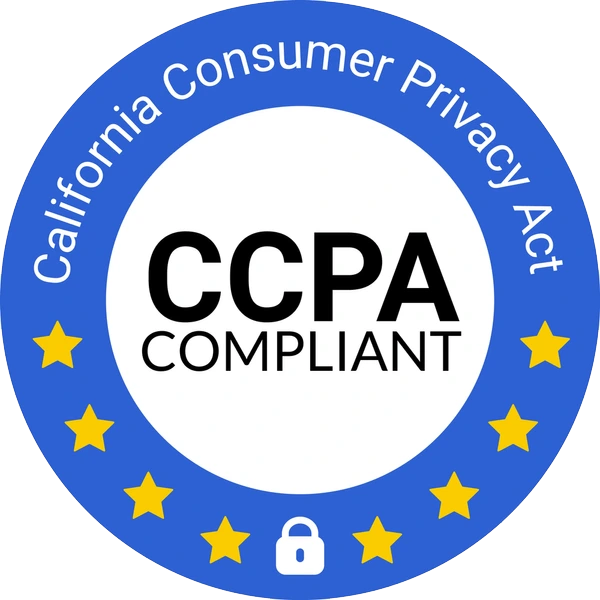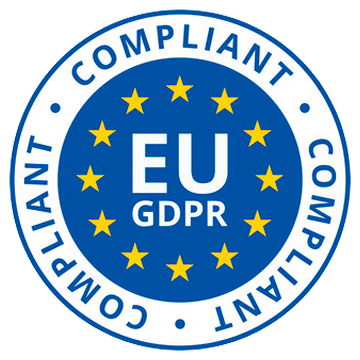Secure document sharing has always been vital to business. The process used to be cumbersome and could involve several days. Through technology, editing documents has become as simple as logging into a secure portal, accessing the document or file in question, and editing it.
Not only does this save time, but proprietary secrets and sensitive documents are safe from anyone that lacks the proper document sharing permissions.
The benefits are numerous. Team members can complete file transfers without having to rely on unreliable email. Additionally, users can engage in document collaboration securely, knowing that only authorized users can see the changes they make. Team members can complete secure sharing exercises and work without resorting to last-minute meetings. Contributors can share large files, create and edit documents. They can also share .pdf, Word, and Excel files as well as send proposals and presentations seamlessly.
That ability has revolutionized secure communication, document collaboration, and coordination, which has changed how most of us do business.
What is secure document sharing?
If you have collaborated with others on a platform like Google, you have engaged in secure document sharing. Document sharing happens with any platform that lets users with the correct permissions create, transfer, edit, and contribute to a file or document while another team member is doing so.
All changes get saved instantly, as are comments. In addition, users can track contributions, and users can meet virtually to work on a document or file.
While many companies utilize a secure file transfer service like Google Docs, many other companies have proprietary internal file-sharing systems. Systems like this cater to that business’s needs. Both share at least the technical principle driving each.
That principle is to give every team member the ability to complete large file transfers, create files or and documents and edit documents. By using a common drive, everything is secure, from sharing large files with secure links to collaborating on documents. Each file is also instantly accessible by authorized users.
Even better, it takes place in an access controlled environment that minimizes threats, ensures only authorized access, and avoids common transfer mistakes that can happen with traditional document sharing systems.
Why does it matter?
Three examples vividly outline why secure document sharing is so critical in the current business environment. Each example also illustrates how secure document sharing can save a company and employee(s) embarrassment and potentially devastating consequences.
Erroneously sent email
A team member is sending out several emails. One of the emails has a contract with sensitive information, including a client’s proprietary information. Trying to get everything done on time, the team member sends out the contract with the sensitive information attached to the wrong email.
Not only is sensitive information potentially exposed to the wrong people, but the sender has no way of knowing who might have access to that email. Their only option is to send a message to everyone that received the email and ask them to ignore the email with the sensitive information. For a list of must-know email security tips, read on.
Misplaced documents
In another example, that same team member editing that same contract is having lunch and leaves the document on a restaurant seat when they head back to the office. They do not realize what happened until they are back at the office and notice the missing document.
If they are fortunate, the misplaced document is scooped up by restaurant staff and kept safe until the team member retrieves it.
If they are not, a stranger picks up the document. That stranger could be a competitor or know a competitor. In this scenario, that document just gave that competitor the pricing structure for products and services plus other proprietary information.
Last-minute edits and deadlines
In the third example, that same team member (who is having a terrible day) is trying to corral everyone to review the contract and submit edits before sending it out. Some recipients ignored the email. Some are working on it. Others looked at it and have it on their to-do list but probably will not get to it by the deadline.
On top of that, the client needs it at the close of business that day. Unfortunately, it is a beautiful summer Friday afternoon, and those who still are in the office are engaged in after-work and weekend plans. The team member responsible for sending the email to the client scrambles to get every employee’s input, but given the timeframe and the day, that task is impossible.
As the deadline approaches, the team member has a choice: Send the contract or business proposal out knowing some folks who should have contributed did not, or miss the client deadline and potentially risk losing the contract.
All three examples could happen on any day with any business that is still working with hardcopy documents or with an email system that still relies on separate, individual input.
Now, imagine those three scenarios, but with a shared document on a shared drive.
The results are instant and obvious:
- No erroneously sent emails
- No documents left at a restaurant
- No missed deadlines tracking down multiple people get their input into the contract
- No unauthorized individuals, including the competition
- No lost competitive advantage
- A lot less scrambling and stress for all involved
How secure document sharing helps you work smarter
Just about everyone that has ever held a job has experienced or witnessed all three of those scenarios.
In the best case, it was just embarrassing for the employee and the company. In the worst-case, proprietary information of the company or a client fell into the wrong hands. The employee was disciplined, lost the faith of management, and was possibly even fired.
Secure document sharing does a lot more than alleviate embarrassment, though. It improves the following almost instantly.
Internal communications
Chasing down multiple parties with multiple copies of a document is inefficient. It possesses the risk that needed information is lost or never makes it into the final product. Shared documents avoid that.
A manager or team member still has to track who needs to provide input, but doing so is easy for everyone involved. The parties from whom editing or document modification is required have assigned deadlines, get reminders, and their document authorization expires once the document deadline passes.
Personal accountability
Shared files also increase personal accountability on a project. If a weak link is perpetually late with input or always comes in at the last minute with opinions or suggestions, their procrastination gets documented on the shared drive. Neglecting to provide information or editing in the time frame allotted is recorded as well.
That lets managers determine the project’s weak links or bottlenecks and address either or both promptly.
Client communications
Team members and clients can now collaborate on work. Constantly printing revisions or resending emails with modifications is no longer necessary. Neither side has to wait for the other to make edits or changes to a document. Clients possess control of the content they want to produce. Team members managing the project stay current with the status of the document or file through online alerts.
Additionally, if an edit or modification is not uniformly supported, team members and the client can discuss the disagreement online.
Speed and time savings
There was a time when emailing a document or file and getting an answer the next day was considered fast. That was because, before email, the only option was to print out a paper and send a hard copy to the recipient, wait for them to edit it, and send it back to you.
The recipient’s edits were manually entered into one master file. Customers that were cutting edge had a fax machine to relay changes, which was much faster than a delivery service.
With secure file sharing, changes are instantaneous, viewable, and editable by an authorized team member. Clients can view and edit the same documents as quickly and easily.
That speeds up the process and saves money in terms of time wasted or lost.
Improved project management
Running around trying to pin down employees on their approval of a file or document or to get any edits they might have, is exceptionally inefficient. So is holding last-minute meetings when everyone is stressed, and one or two people insist on making changes to the document.
Secure file sharing renders most of that chaos obsolete. Procrastinators can add information on their own time. If a deadline passes, the accountability is on them.
The client is also involved in the document management process. Including the client eliminates the need to send them a document or file. The client can work on the document or file on their time and alert the team leader or project manager when they are ready to go.
By just eliminating those last-minute meetings and helping clients participate via secure document sharing, you can successfully manage a project.
Less stress
No one likes those last-minute meetings. Equally, no one likes the procrastinators who feed into the chaos by making changes to a document at the last minute. For everyone involved, even the procrastinators, stress levels skyrocket as deadlines approach and the unprepared weigh in with their two cents.
Secure file sharing eliminates most of that stress. Deadlines will always quicken the pulse, but stress levels stay manageable if a document is shared and managed correctly.
Better documentation
External document management has always been somewhat of a haphazard process. Frequently, multiple copies of the same presentation, memo, communication, etc., were held by multiple parties, most of whom had edits to be made on the file or document.
One person had to take all those edits and incorporate them into a final document or at least an edited document that needed official sign off or signature.
If a person had a last-minute edit, a master document had to be altered. This worked for the most part unless the document had a firm submission deadline. Then the person responsible for the master copy had to scramble and make last-minute edits and hit the deadline.
In most situations, this would not matter all that much. It was inconvenient, but that was all. However, when the document in question was time-sensitive, like a legal brief with a hard deadline, late changes could put an entire case in jeopardy.
Better security
Another issue during the days of multiple, hardcopy documents or files was that not everyone was as careful as they needed to be. It was common for an iteration of an important document to be scattered across an office, some on laptops, some on PCs, some in hardcopies on desks or in inboxes.
Someone that wanted to get their hands on a copy of a document or file did not have to try very hard. Even if there was no ill intent, documents often were neglected and left unsecured.
There are no multiple copies of a file or document floating around an office in a secure document-sharing environment. The document or file is safe on the shared drive, and only those with authorization can edit that document.
Better editing processes
With secure file sharing, everyone is alerted when a document is ready for review and when they do that, it gets logged. Edits are also trackable, so ownership of changes, revisions, additions, or edits is never hard to establish.
This lets managers remind and prompt employees to review time-sensitive documents and make edits to them. Now, no one has an excuse why they did not get to review or edit any document.
Edits are also much easier to accommodate as everyone can see how they affect a document. If an edit does not work with the existing verbiage or is off-topic, it is right there for every person collaborating to see.
How it works
How secure document sharing works is simple.
A party creates a document and saves it to a shared drive or folder. Anyone with access to that drive can add, subtract or edit that document. Additionally, using real-time edits and video conferencing technology, teams and clients can collaborate on a document, file, or project in real-time.
Internally, staff can critique proposals, contracts, copy, etc., and have changes instantly incorporated into the text before getting to the draft stage. Editorial and approval schedules can also be developed, and staff members can be contacted with information on what they need to do and the deadline they need to meet.
Drafts are also open to common editorializing. This includes presentations, contracts, briefs, advertising verbiage, business plans, etc. No document or file requiring more than one person to look at it would not be better off in a secure document and file sharing environment.
Perhaps most importantly, unplanned or late edits can be seamlessly incorporated into documents, proposals, etc. Workflow thus improves by cutting out time-consuming manual editing processes.
Unwieldy documents can now be easily managed
Hard copy documents in multiple locations can be tough to manage securely.
Secure document sharing makes it easy to make changes. For the person coordinating document or file development, an online, collaborative effort is much simpler to manage than coordinating multiple parties in multiple locations, each with their own document or file version.
Secure document sharing is more than just B2B
Thus far, the only aspect of secure document sharing addressed is in a business setting. Secure document sharing can also work in just about any environment that possesses a document or file and the need for collaboration.
For example, a common file could be a schedule for a school event, remote learning session or virtual classroom. Another document could be a policy proposal for a recreational sports league. Churches can use shared documents to provide information on programs and bulletins.
Other examples include musicians collaborating on lyrics for a song. Family members putting together an anniversary party could also benefit from document sharing.
If there is a need for collaboration, secure document sharing is the answer.
What to look for in document sharing tools
Business or personal, there are some basic requirements that any secure document sharing system must have:
- Able to be edited instantaneously
- Document edits must be in real-time
- Multiple parties must be able to edit simultaneously
- Intuitive and easy to learn features
- Password protection for authorized users
- Easy to understand training
- Strong customer service
- The ability for large scale collaboration across multiple venues
- Tracking features that allow for viewer engagement tracking
- Full compatibility with all standard file types
Final thoughts
The introduction of secure file sharing has been a game-changer. Not only is it easier to collaborate on a document or file, but it is also more transparent and secure. While many file-sharing systems have emerged, few have all that a business needs regarding compatibility, ease of use, and security.
Sizle’s secure file sharing platform has helped businesses across the globe harness the power of collaboration in an easy-to-learn environment that is secure, highly customizable and easy to use.



